July 10
We depart Slovenia today, driving back to Bratislava to both return the rental car and to tour the city for a couple of days. This round-about diagram looks a bit intimidating, and then we're on what feels like a super speedway.
The car is turned in and so we get a breather from car trekking for the next few days.
July 11
Self-guided touring is the order of the day.
Reconstruction and refurbishment at Michael's Gate, the only city gate that has remained of the medieval fortifications and ranks among the oldest town buildings. The original gate/tower was built around 1300, its present shape is the result of baroque reconstructions in 1758, when the statue of St. Michael and the Dragon was placed on the 51 meter tower top.
Reconstruction and refurbishment at Michael's Gate, the only city gate that has remained of the medieval fortifications and ranks among the oldest town buildings. The original gate/tower was built around 1300, its present shape is the result of baroque reconstructions in 1758, when the statue of St. Michael and the Dragon was placed on the 51 meter tower top.
Gerri at the statue of St. Michael, at the site of the former drawbridge, which was later replaced by a wooden fixed bridge, and then by a brick structure that is today's Michael's Bridge, built in 1727 and now the oldest bridge in the city. Below the bridge is the last remaining stretch of the Bratislava Moat.
The other photo below is after having passed under the tower and through the gate, where we stand inside the original medieval walls in the old town area.
The other photo below is after having passed under the tower and through the gate, where we stand inside the original medieval walls in the old town area.
We find more gates of a different nature.
Stairways going this way and that.
Old Town Hall is a complex of buildings from the 14th century and is the oldest city hall in the country and one of the oldest stone buildings still standing in Bratislava, with the tower being built approximately in 1370. A town hall was created in the 15th century by connecting three townhouses.
One of several whimsical statues placed throughout the old town area.
Roll out the barrel, and we'll have a barrel of fun....
The Primate's Palace is a neoclassical palace built in 1781 for Archbishop József Batthyány. Today, it serves as the seat of the Mayor of Bratislava.
Backside of the Old Town Hall, with a tunnel corridor that takes us from Main Square to Primate's Square.
Courtyard of Primate's Palace.
Part of the old town defensive wall integrated with more modern structures.
-and-
"IN THE 1700's, THERE WAS A HOUSE CALLED "ALCHYMIST HOUSE" IN WHICH THE NOBLE STEFAN DE UISZTY, AN ALCHYMISTIC, SETUP A WORKSHOP TO ATTEMPT PRODUCING GOLD FROM IRON DUST."
-and-
"IN THE 1700's, THERE WAS A HOUSE CALLED "ALCHYMIST HOUSE" IN WHICH THE NOBLE STEFAN DE UISZTY, AN ALCHYMISTIC, SETUP A WORKSHOP TO ATTEMPT PRODUCING GOLD FROM IRON DUST."
Another of the various Bratislava whimsical statues, Čumil ("watcher"), an offbeat bronze statue of a sewer worker resting at the top of a manhole, "peeping" at passersby.
The old Slovak National Theater building located on Hviezdoslav Square - the Neo-Renaissance structure was built in 1885–1886 during the time of Austria-Hungary.
Look closely through the hazed glass man-hole cover, you'll see remnants of another of the town's original gates.
Hans Christian Andersen
"Constructed between 1311 - 1452, St Martin's Cathedral of the Catholic Archdiocese of Bratislava is situated at the western border of the historical city center below Bratislava Castle, known for being the coronation church of the Kingdom of Hungary between 1563 and 1830.
Together with the castle on the hill adjacent, and somewhat similar in its striking, but fairly stark Gothic lines and coloring, St Martin's 85 m (279 ft) spire dominates Old Town's skyline. The tower virtually formed a part of the town's fortifications, built as it was into the city's defensive walls."
Together with the castle on the hill adjacent, and somewhat similar in its striking, but fairly stark Gothic lines and coloring, St Martin's 85 m (279 ft) spire dominates Old Town's skyline. The tower virtually formed a part of the town's fortifications, built as it was into the city's defensive walls."
Most SNP ("Bridge of the Slovak National Uprising"), commonly referred to as Most Slovenského Národného Povstania and also just as the UFO Bridge, completed in 1972, spans the Danube. It is the world's longest single pylon cable-stayed/single cable-plane bridge, with an open span almost 1,000 ft long.
This sculpture is made in honor of the Slovak actor, humorist and singer Julius Satinsky.
July 12
The Franciscan Church was consecrated in the year 1297.
This tower is well protected by gargoyles.
This likeness of Ignac Lamar is the only city whimsical statue which is silver (the rest are bronze). He lived in Pressburg (former name of Bratislava) around 1900. They say he was in love with a woman who sadly did not love him back. This disappointed him so much that he went mad, and people could often see him giving flowers to random women he met in the streets.
The Neolog Synagogue stood until 1969, it survived World War II only to be demolished to make way for the construction of the UFO Bridge. It was built in 1893 as a two-story Moorish building that contained two octagonal onion dome towers. The synagogue was constructed on a square known as Fish Square, adjacent to St Martin’s Cathedral.
The Neolog Jewish community was founded in 1871 by a group that was unhappy with the strong Jewish Orthodox leadership of the community. During the post-war period, the building served as a temporary TV studio for Slovak Television. There were plans to turn the building into a Jewish museum, but it was eventually demolished under suspicious circumstances. The memorial that now stands on the site was installed in 1996. There is a symbolic image of the synagogue on a marble wall and a sculpture placed in the center.
Other information at the site said developers submitted plans that included demolishing the synagogue, but authorities would not approve them. Then the developers bought the site, and demolition proceeded.
Below indicates where the synagogue stood, with the pinkish-red area showing where new highway and other construction occurred from the 1960s.
We continue climbing the big hill to check out the castle.
Bratislava Castle is the main castle of Bratislava. The massive rectangular building with four corner towers stands on an isolated rocky hill of the Little Carpathians directly above the Danube river in the middle of Bratislava. Because of its size and location, it has been a dominant feature of the city for centuries (since the 9th).
Development pace is strong in the city, as it is with many cities in eastern Europe.
We head along the river to see more sights.
Many tourists tour the Danube accessing several large cities and countries via riverboat cruising.
We're in search of a barge based brewery.
Heee heee hee.
It's here! And it's open!
Pretty good pilsner and German style brews.
We finish the night at a beer garden - we don't think we've ever found a bad European beer garden.



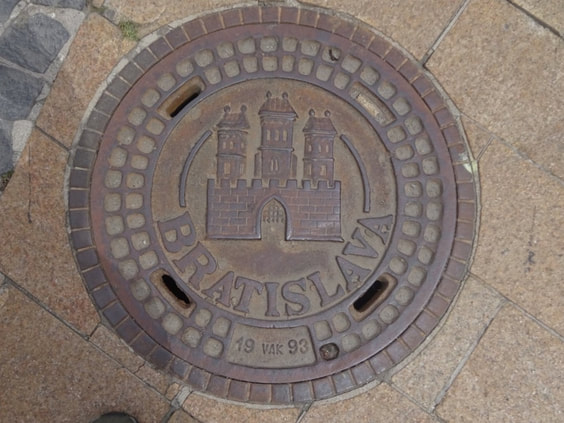
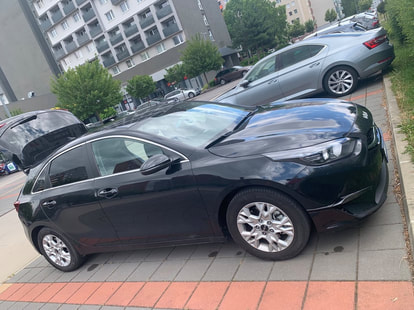

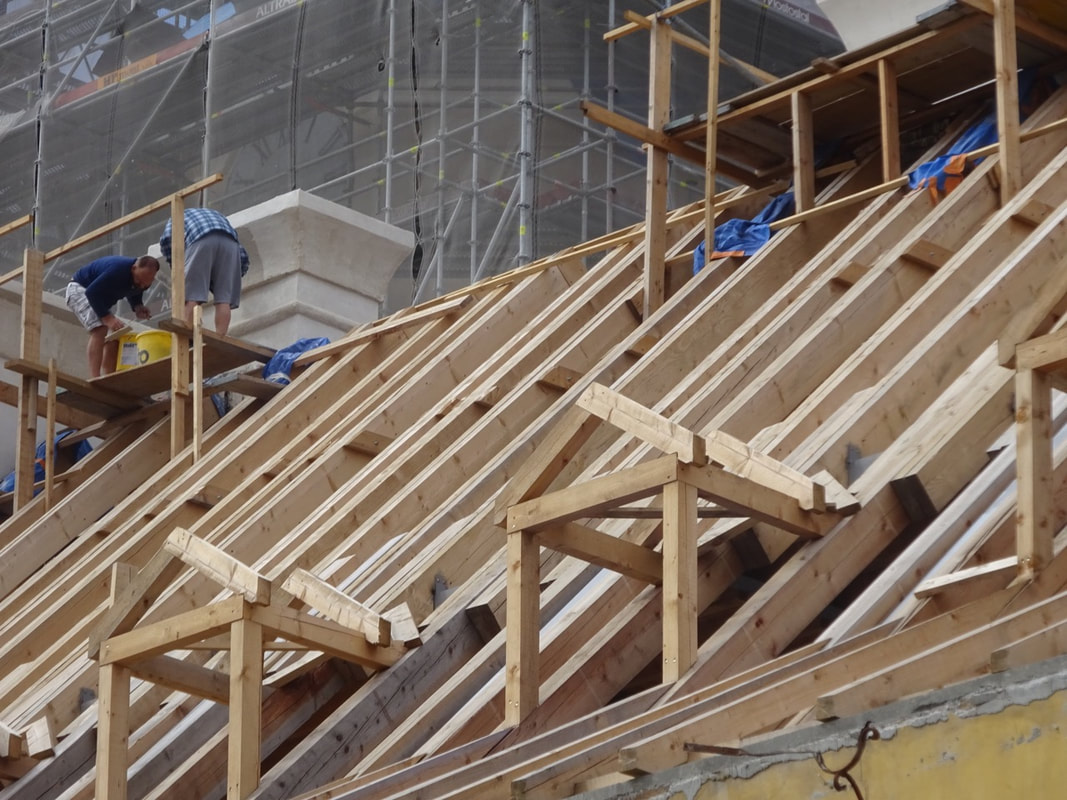


















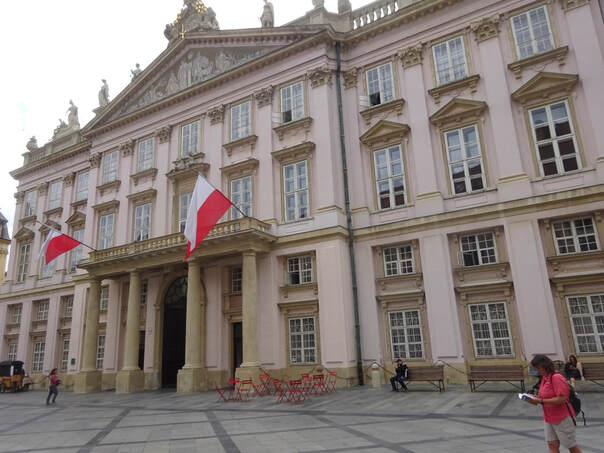






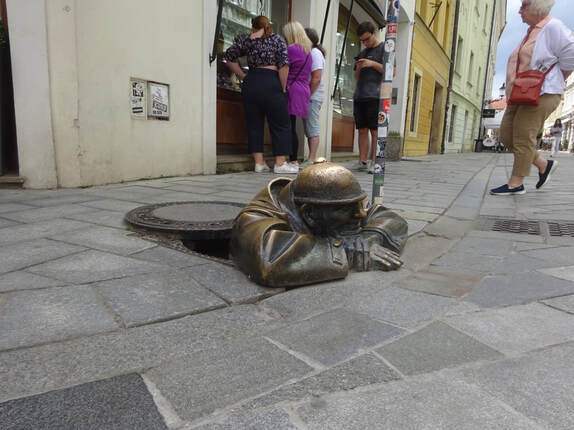








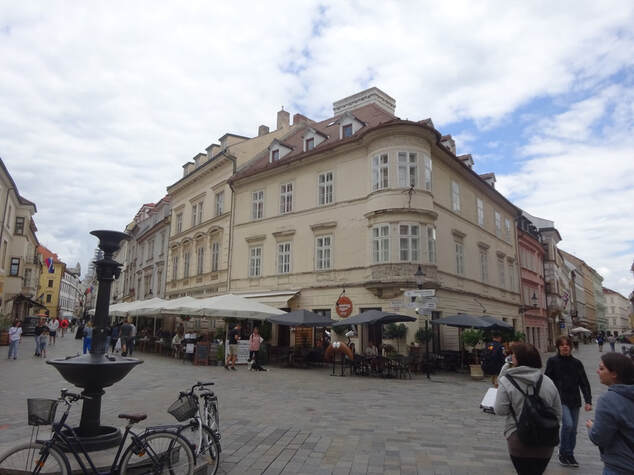


















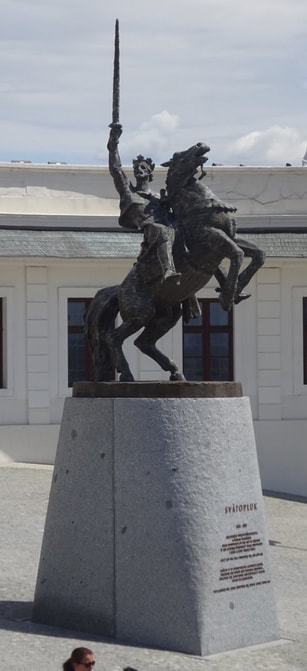

















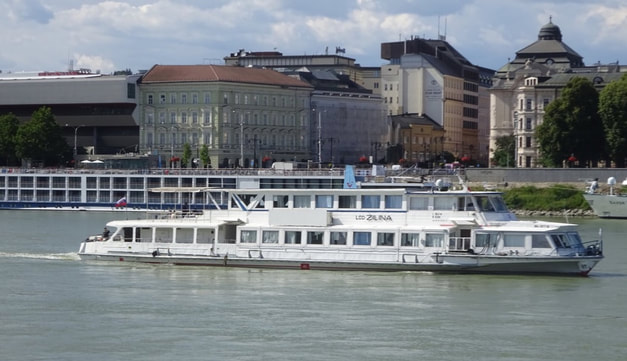

 RSS Feed
RSS Feed
